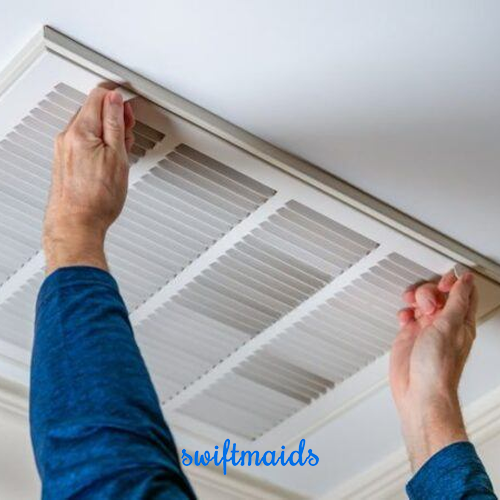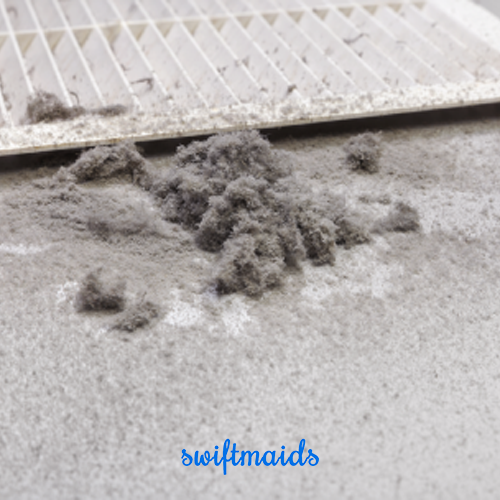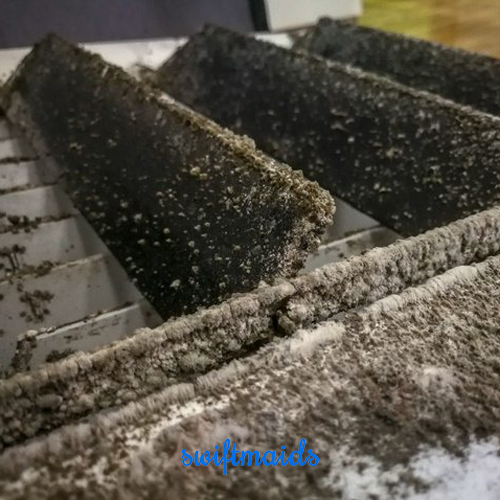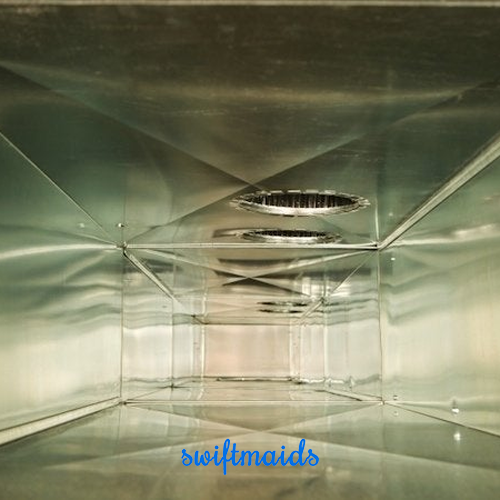Keeping the air ducts and vents in your house regularly is vital, as it requires expert Air duct cleaning tips. When you forget to change the filter once a month, pollutants could make ways to get into the cooling system in your residence. The air in your house’s ducts may become polluted by bacteria, fungi, and viruses. If your air ducts aren’t cleaned properly, these contaminants will hang out in the air within your house.
It’s worth noting that individuals with clean ducts often report improved health. For those dealing with respiratory problems and allergies, maintaining clean ventilation can play a significant role in reducing the risk of symptoms worsening.
See the page on Air Duct Cleaning Tips for detailed instructions on how to safely clean your unclean air ducts. By looking over the information offered, you can also select the best duct cleaning service Calgary. Our objective is to be sure you are informed about maintaining your home healthy and clean by highlighting the most important parts of this process.
Where are the air ducts in the house?
Air ducts are HVAC elements that are typically under floors, between joists and studs, and in walls. In most homes, the HVAC system is installed in the basement. In some larger houses or houses without basements, the air handlers are located in an attic room with holding channels from the attic and from the walls down into the rooms to provide heating and air conditioning. Goes.

When organizing or decorating rooms, you should care to leave space around the air source, as this is important to maintain the system’s efficient operation. Avoid covering vents with furniture or curtains to improve airflow and optimize your home’s system for heating, cooling, and even temperature regulation.
What factors make the air ducts dirty?
Airborne pollutants in your home visibly land on various surfaces but are circulated by air currents created by the HVAC system. If you see dust in your closets, you should know that the same stuff is breathing through your HVAC ducts and filters. Smoke, mould, and pet dander are other typical airborne contaminants that might change depending on the season, lifestyle, and geographic location. If your home has moisture problems, mold can grow inside your air ducts.

Various insects are sometimes attracted to the air ducts through air return. One of the unpleasant side effects of these creatures entering your air ducts is that they can leave behind waste materials and affect the overall cleanliness of your air ducts. As a result, they may get stuck there and die.
When should air ducts be cleaned?
According to the Air duct cleaning tips for air conditioning systems that only work at certain times of the year, clean the air ducts about a month before turning them on. Otherwise, clean the air ducts as needed. If you smell mold or smell insect droppings when you turn on the air conditioning system, you should immediately clean the air ducts.
A lot of dust is generated after an unusual event, such as installing a new HVAC system, doing repairs, or doing a home renovation. In this situation, it is better to clean the house’s air ducts. Dust and debris that have not been moved before may be moved with this work.
Air duct cleaning tips
As we said in the previous parts, the air ducts in the house have a very important task and carry out the process of air transfer throughout the house through the heating or cooling system. Over time, there is a possibility that the air ducts will become dirty or contaminated with mold and dust. If people in the house have environmental sensitivities, they may have health problems. Now that you know how important it is to clean air ducts, you can continue to learn important Air duct cleaning tips to ensure the cleaning project is done right.
- Check valves: Open the vent caps to check the inside while checking that there is no dust or any other contamination inside the vent.
- Check the return registers: Inspect the return air registers for dust accumulation, especially if a thick layer covers the registers.
- Remove the filter: At this stage, remove and check the air filter. If your air filter is dirty or covered with dust, it is time to change it.
- Check the furnace: Open your furnace case and check the blower fan, motor, and furnace controls for dust.
- Check the air conditioning coil: If there is dust on it or the walls of the compartment, you should know that the air filter is not working.
- Turn off the power: Turn off the power to the heating and air conditioning units. Note that turning off the thermostat does not turn off the device. You must turn off the power at the circuit breaker or the furnace’s power switch.
- Removing the air duct caps and cleaning them: At this stage, remove them and clean the nets with a brush. Be careful that you can use a vacuum cleaner to clean the ducts. Using the model with a hose will give you the most power to control and clean.
- Cleaning ceiling vents: As the last step, clean your roof vents according to the Air duct cleaning tips. You can use a vacuum cleaner to remove the dust from this part.

Why is air duct cleaning useful?
In the last few years, home air purification has attracted the attention of many people. You should consider cleaning the channels because these channels get dirty over time for various reasons, so they need to be cleaned at certain times according to the Air duct cleaning tips. If any of the following conditions have happened to you, you should clean your air ducts:
- There is dust and pollution on the metal nets that cover the ducts
- The ducts are infested with insects and other vermin
- Ducts are excessively clogged with dirt and debris
How HVAC Ducts Work?
HVAC air ducts operate as a continuous loop. Air from the centrally located AC unit or jug flows through supply ducts and into the rooms. Then this air returns to the central unit through the return duct.
supply channels
Supply channels blow hot air or cold air into the rooms. Supply channel registers should be in most rooms of the house, although some rooms may not be serviced. Supply registers are covered with plastic or metal mesh and are located on the floor, exterior walls, ceiling or under windows. Supply ducts are cleaner than return ducts because the air first passes through a filter before making its way to various supply stores throughout the house.
Return air channel
A large return air vent removes air from the rooms and returns it to the AC system or furnace. The return is usually located in the wall near the floor level. The return air duct is always dirtier than the supply ducts because dirty and unfiltered air from inside the house leaves the return duct on its way back to the HVAC system.
DIY Duct Cleaning vs. Professional Duct Sharpening duo to air duct cleaning tips
DIY:
- Cleans the last 10 feet of each duct
- It sends waste to the valves
- Not all the stuck wastes go out in the sewers
- No cutting into ducts
Professional:
- Cleans the entire ductwork
- The waste is sent to the HVAC unit
- Possible cutting into ducts to retrieve debris
DIY channel cleaning is different from professional channel cleaning because professional machines are not available and it is difficult to repeat them based on DIY.

Dislodging Contaminants
In HVAC ducts duo to the air duct cleaning tips, most contaminants are attached to the sides of the ducts or are so heavy that they cannot be removed by air pressure alone, but must be physically removed. With professional air duct cleaning tips, special tools used to clean air ducts include brushes or air whips attached to compressed air hoses and contact vacuums. Professional negative air machines are very powerful and can remove most contaminants.
With DIY duct cleaning, a flue cleaning head is sent to 10-feet flexible nylon rods through the supply and return duct. The flue head, which is rotated by a power drill, cleans most of the duct but cannot touch the entire side of the duct.
Removing Contaminants
With professional air duct cleaning tips, negative air pressure is applied to the air ducts while the contaminants are removed mechanically. It moves contaminants back from the return air or supply vents to the main unit. Air duct cleaning professionals may have to cut the sheet metal duct near the air intake. It provides access to collected data. The hole is sealed after the work is done.
By DIY duct cleaning, the particles are drawn forward towards the vents and not towards the back or towards the furnace or AC.
Hiring a professional cleaning team
You may be able to clean the air ducts yourself by following Air duct cleaning tips, but our recommendation is to consult an expert to perform the process in a more detailed and basic manner. Your home’s air conditioning system has sensitive parts that professionals should only clean. They know very well how to access and maintain these parts without damaging them.
You need a specialized cleaning crew to safely clean fan motors, fan housings, heat exchangers, and cooling coils because they could be covered with dust.
Along with dust, germs can live in your air passages. The use of chemicals, including pesticides and biocides, requires an expert. Your air conditioning system can be infested by pests or damaged, resulting in many risks. Therefore, it is better to entrust the cleaning of the air ducts to Swift Maids expert team so that this process can be done correctly and without problems.

